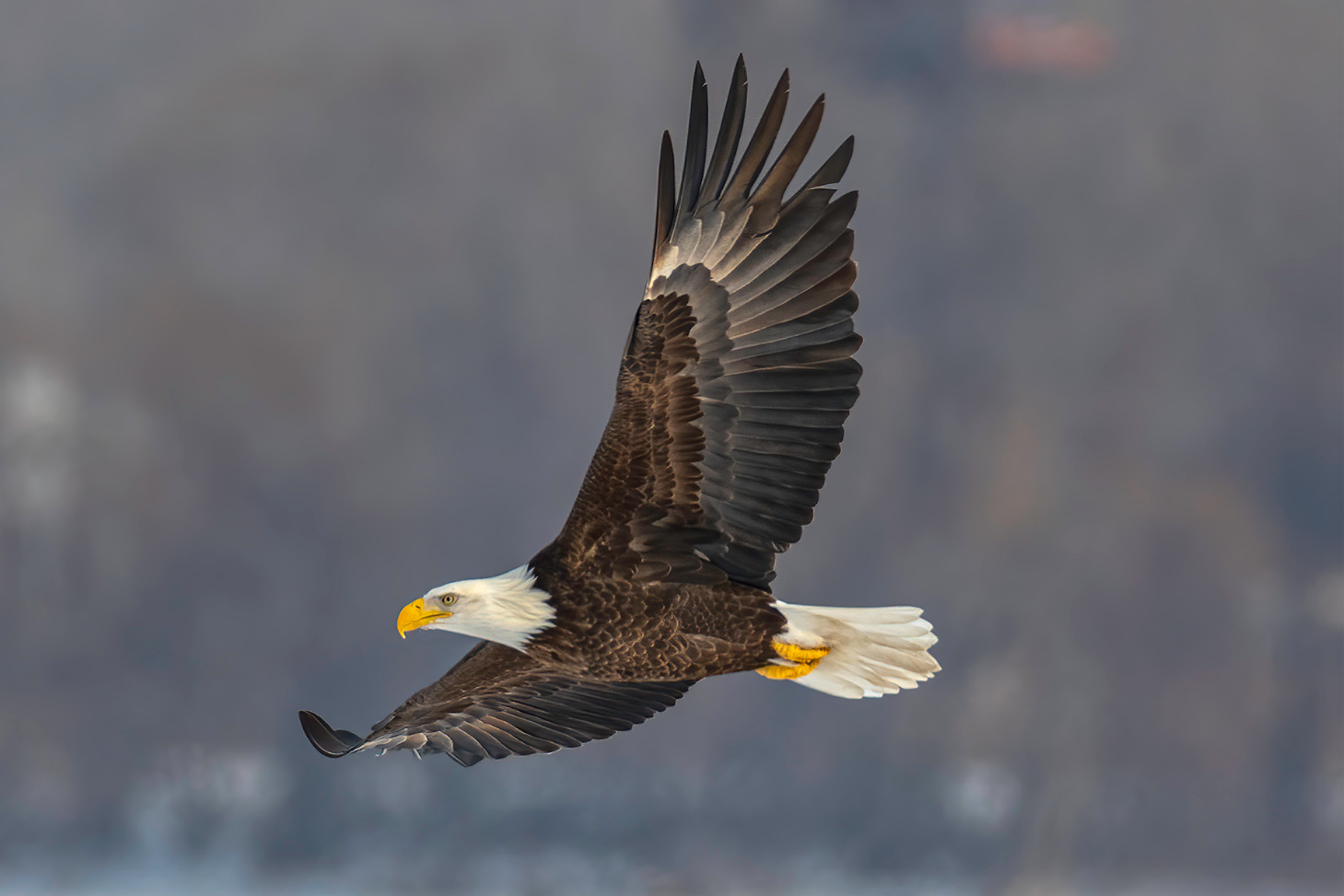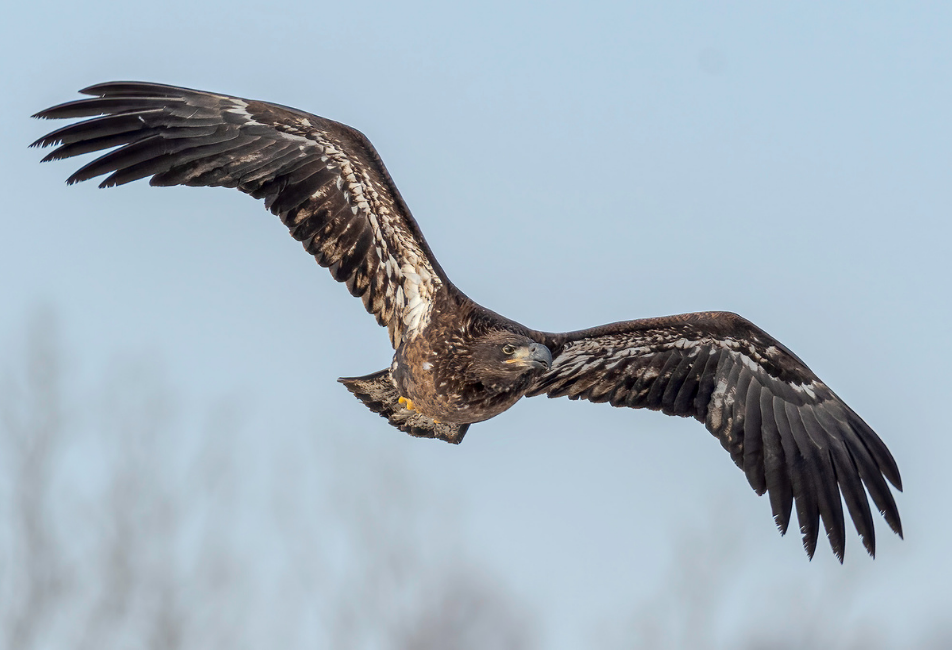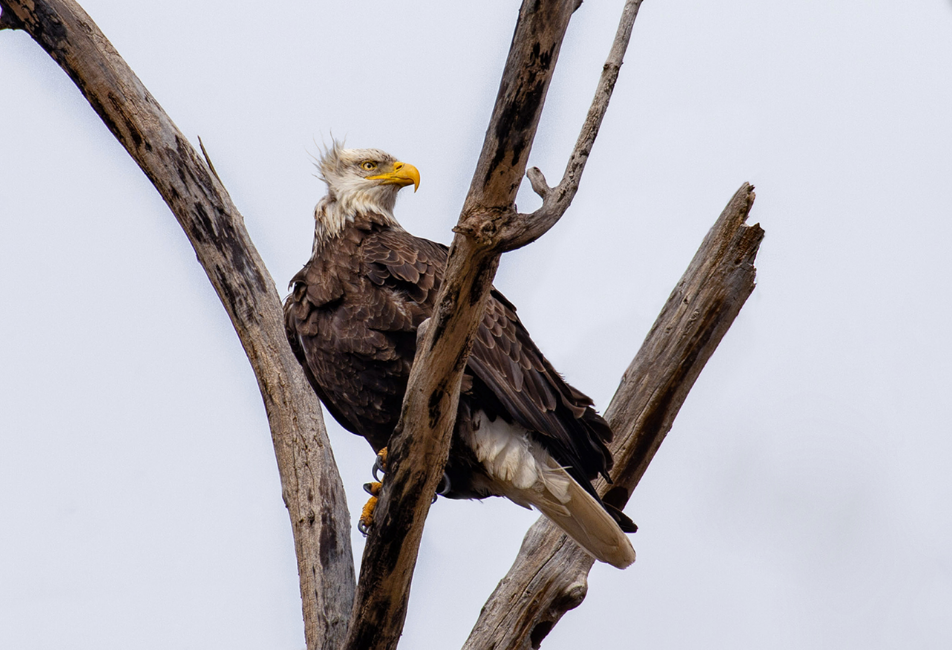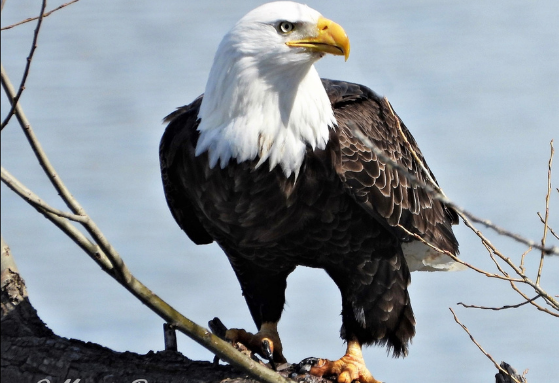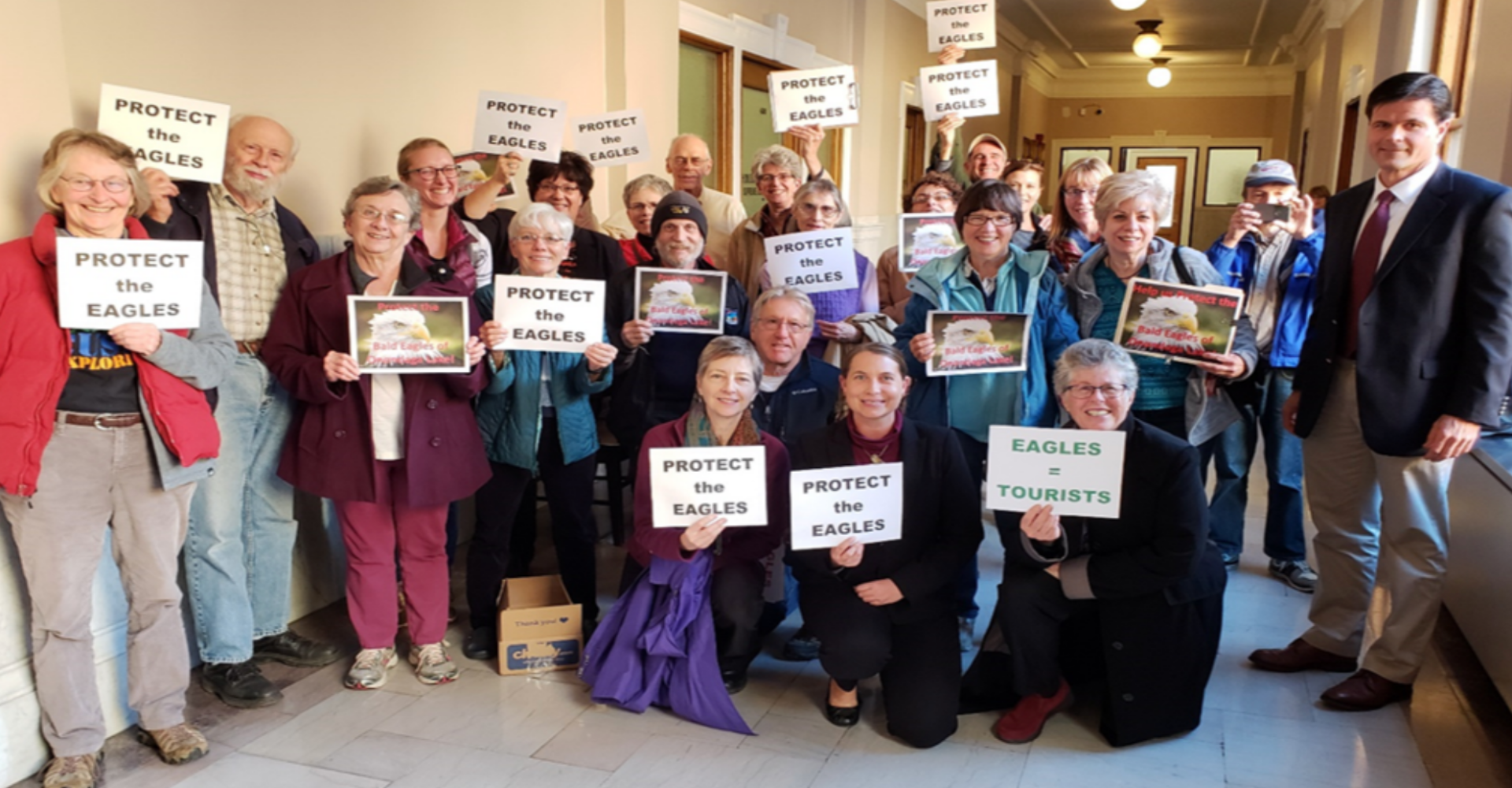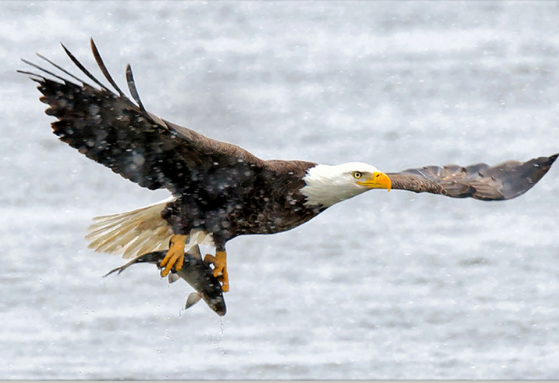That national conservation success also has played out locally on Onondaga Lake, a body of water with its own history of environmental woes. In fact, that eagles exist to defend is a departure from New York State history. In the 1970s, there was only one known nesting pair of bald eagles in the state. Now, Kocek has counted more than 100 eagles on some days at the roost, catching fish, perching along the branches, or soaring over the lake. As a top predator, the return of eagles to Onondaga Lake means the return of the fish and other wildlife they depend on for food. The popularity of Onondaga Lake with eagles reflects the lake’s continuing recovery from decades of pollutants. Today, Onondaga Lake is the largest urban roost for wintering bald eagles in New York State.
Chris Lajewski, director of the Montezuma Audubon Center, has been involved with that conservation effort. Lajewski serves as the director of the Onondaga Lake Conservation Corps, a volunteer-based group that has worked to decontaminate the lake and rehabilitate the eagle habitat. To date, Lajewski says they’ve engaged nearly 1,000 people in their restoration project.
“Our role is really to inspire the future stewards of the lake, watershed, and all the habitats of the wildlife that are found there,” Lajewski says.
But the significance of the eagle in the history of the region extends beyond post-1900s conservation efforts. For members of the Haudenosaunee Confederacy, the eagle represents a guardian of peace, and its image is often pictured hovering over the Great Tree of Peace in Haudenosaunee cultural arts. “The eagle is a really powerful symbol in the story of how the Haudenosaunee confederacy came together under the great law of peace on the shore of Onondaga Lake over 1,000 years ago,” says Sarah Shute, director of the Skä•noñh - Great Law of Peace Center, which sits near the lake and serves as a Haudenosaunee heritage center focused on telling the story of the native peoples of Central New York. “The eagle was put at the top of the white pine, which is the Tree of Peace and the representative guardian of the peace, and so to see a resurgence of eagles right here at Onondaga Lake is such a powerful symbol.” The lake too is sacred. The creation of the Six Nations Confederacy (Mohawk, Oneida, Onondaga, Cayuga, Tuscarora and Seneca Nations) occurred there thousands of years ago.
“I have probably seen hundreds of eagles in my life. I've seen them nesting, and I've seen them feeding their young,” Shute says. “I see eagles almost daily here, and it never gets old. It never feels mundane. Whether I am here in the center, and I see them landing in the trees out front or fishing in the lake. Or I see them soaring over the city skyline when I'm driving to and from work. Each and every time it's a special moment.”
